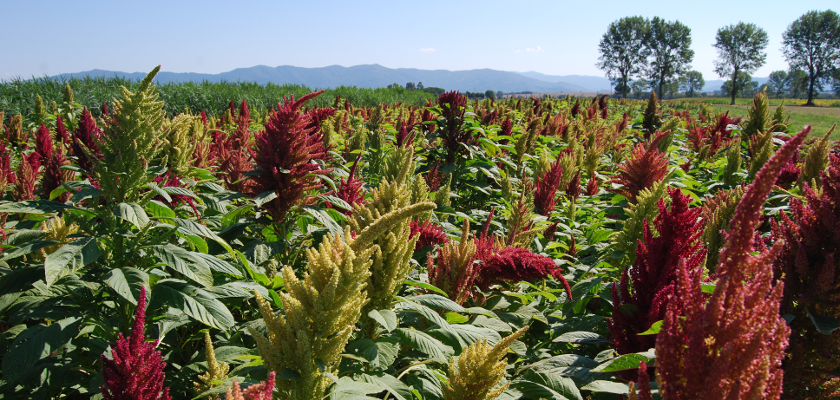
In March 2015, at the conference to present the project in Florence, a handbook on cultivation technique of amaranth was provided to the intervened farmes by the research group of the DISPAA, along with a small amount of seeds selected in the course of searches.
Probios took part in the conference, illustrating the opportunities on the Italian market and making themselves available to evaluate the production and put it in their bids. To this day, Terre Regionali Toscane, institution of the Tuscany Region located in the Natural Park of Alberese in Maremma, is one of the first companies that is testing its cultivation along with private farms.
This "pseudocereal", native of Central America, has been for millennia the king of the Andean peoples nourishment, the Incas and Aztecs, who considered it sacred to the gods. Thanks to its nutritional characteristics, amaranth is inserted in the category of so-called "superfood" and can be used for food uses, but also for cosmetic and pharmacological ones.
From this seed, rich in high quality protein and naturally gluten free, derive those kind of foods which especially suitable for children, the elderly and for people with celiac disease.
An extended cultivation of amaranth in Tuscany would greatly benefit not only from a purely economic, but also from an agronomic point of view, with an ethical and environmental impact, given the growing demand for this precious plant but currently spans half the world to arrive on Italian tables. A great opportunity for the region, first in Italy and second in Europe only behind the Czech Republic and Ukraine, to convey an healthy agriculture, respectful of agronomic techniques and alternative to large industrial crops, with short chains dedicated to the production, semi-processing and trade of this seed from the millenary tradition.





